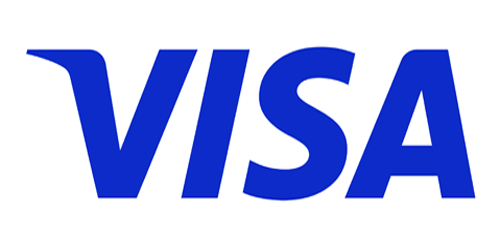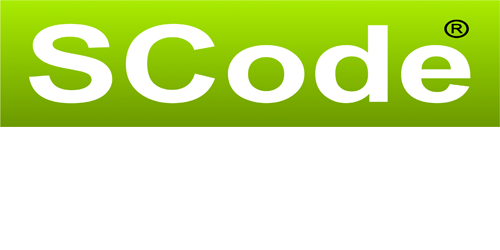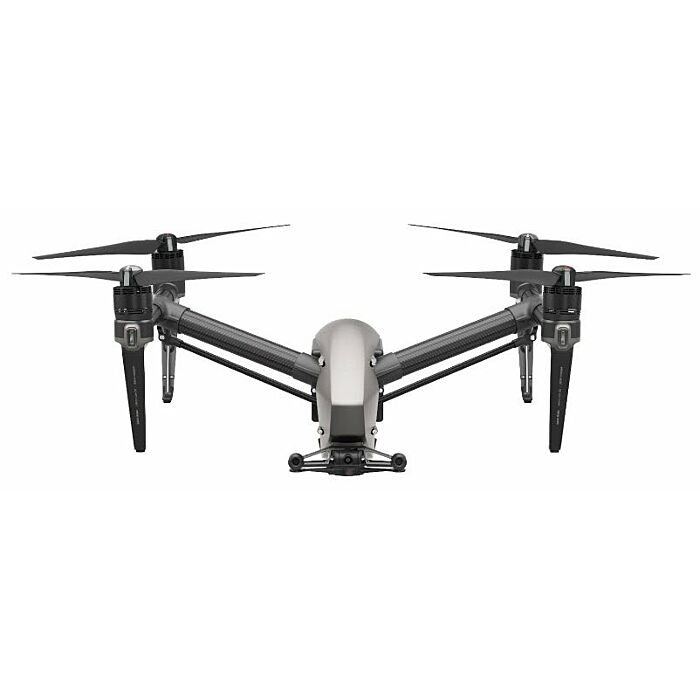
DJI Inspire 2 Quadcopter Drone
DJI Inspire 2 Quadcopter Drone, 27 Minutes Flight Time 7000 Meters Range, 94 kph Top Speed, Vision Positioning System, Fwd 3D Sensing System, Upward-facing IR system, GPS/GLONASS Battery Capacity: 4280 mAh Intelligent Flight Battery (Dual Battery), Main Camera not included, 2-axis onboard FPV camera, Storage: Micro SD card Slot, CineSSD Slot, Features: 30m Sensor Range, Spotlight Pro, Intelligent Flight Modes, Tap to Fly, Active Track, Broadcast Mode, Smart Return to home, Flight Autonomy, Increased Reliability, In the box: DJI Inspire 2 Aircraft, Remote Controller, Intelligent Flight Battery x 2, Propellers Pair x 4, Charger x 1, Battery Charging Hub, 16 GB microSD, Carrying Case, Spares
| Brand | DJI |
|---|---|
| Cameras Type | Drones |
Details
DJI Inspire 2 Quadcopter Drone, 27 Minutes Flight Time 7000 Meters Range, 94 kph Top Speed, Vision Positioning System, Fwd 3D Sensing System, Upward-facing IR system, GPS/GLONASS Battery Capacity: 4280 mAh Intelligent Flight Battery (Dual Battery), Main Camera not included, 2-axis onboard FPV camera, Storage: Micro SD card Slot, CineSSD Slot, Features: 30m Sensor Range, Spotlight Pro, Intelligent Flight Modes, Tap to Fly, Active Track, Broadcast Mode, Smart Return to home, Flight Autonomy, Increased Reliability, In the box: DJI Inspire 2 Aircraft, Remote Controller, Intelligent Flight Battery x 2, Propellers Pair x 4, Charger x 1, Battery Charging Hub, 16 GB microSD, Carrying Case, Spares
Overview:
The DJI Inspire 2 is a high quality and extremely versatile quadcopter drone built for professional filmmaking. The drone is extremely intelligent and features all the newest technologies found in DJI's other drones and some more. The best of these features is without a doubt DJI's autonomous FlightAutonomy, which has been specifically revised on the Inspire 2 and now features font, rear, left, right, bottom, and top obstacle avoidance. The front of the Inspire 2 features a 2-axis gimbal stabilized global shutter FPV camera. This is not the primary/main recording camera, but displays the front of the drone so users can control the drone better when the main camera is not facing frontwards. The standard Inspire 2 kit comes without a primary camera, but is currently compatible with 2 new 5.2K camera gimbals; the X4S with a 1-inch sensor and X5S with a MFT sensor. Integrated into the Inspire 2 is a new CineCore 2.0 image processing system, capable of processing high bitrate videos and more Please note that the licence keys for CineDNG and Appple ProRes are not included in this bundle. If you require RAW video recording the Inspire 2 Premium Combo comes with CineDNG and Appple ProRes pre-installed.
Features:
Compatible with 5.2K Gimbal Cameras
CineCore 2.0 Image Processing
Dual-Battery Design
Accelerates to 80kph in 4 Seconds
Top speed of 180kph
6 direction FlightAutonomy obstacle sensing system with stable hover
The DJI Inspire 2 features the most advanced FlightAutonomy obstacle avoidance system in any DJI Drone with 6 directions including top obstacle avoidance. This obstacle avoidance system is made up from a complex network of components including infrared sensors, the primary camera, dual-band satellite positioning (GPS and GLONASS), and computing cores. The new infrared sensing systems sensors with a field of view of 60° and 54°, and a maximum range of 7m, provides a wide view of the scene around the Inspire 2. These infrared systems replaced the traditional ultrasonic sensors because they only have a detection range of 3-5m and may be confused when affected by propeller vibration or when sensing uneven surfaces. Together all these components renders an accurate 3D environment (up to 30m) around the Inspire 2 and monitors critical data and rule out possible errors so it can react to its surroundings. This obstacle avoidance system works both in outdoor and indoor environments and is activated in every Intelligent Flight Mode including all ActiveTrack modes, TapFly and Terrain Follow. Additionally these technologies also makes the Inspire 2 hover with incredible stability. FlightAutonomy is also available during automatic Return to Home, and the drone will follow its flown path back while dogging obstacles to return safely in case of a lost connection or low battery.
ActiveTrack subject follow and framing with 3 modes
The DJI Inspire 2 features the same ActiveTrack follow modes found in its Phantom 4 drones. Activetrack successfully makes autonomous/automatic follow recording a reality. Whether you or your subject are running, cycling, skating, skiing, driving, the system uses an advanced combination of computer vision, object recognition, gesture support and machine learning to track as your subject moves. Circling a moving object and keeping it in frame used to only be achievable by the most confident of pilots, now thanks to completely autonomous following and blistering flight speeds everyone can do it. A new algorithm also recognizes more subjects, from people to vehicles to animals, and will adjust its flight dynamics to match, ensuring smoother shots. New ActiveTrack flight modes opens new creative tracking including Trace, a follow mode behind or in front of a subject; Profile, for tracking alongside a subject at a variety of angles to get profile shots of the subject; and Spotlight, a mode that keeps the camera trained on a subject while the aircraft flies almost anywhere. The entire time ActiveTrack is running obstacle avoidance is too, so it will decide whether it should continue following, avoid an obstacle or simply stop.
On-board 5.2K video processor with high bit-rate recording and SSD storage system
Integrated into the Inspire 2 is a new CineCore 2.0 image processing system, capable of processing 5.2K videos, and is capable of storing files in DJI's CINESSD storage system. By placing these parts inside the airframe, image data can be stored and processed more readily, while the CINESSD storage system itself can be better protected. It also means that the camera can be more lightweight, increasing aircraft agility and overall flight performance. CineCore 2.0 is compatible with the Zenmuse X4S and X5S for different shooting needs, and both cameras attach using a new gimbal port that is quicker to connect and more reliable.
Increased agility, 2kg thrust per rotor, and top speed of 108kph
The Inspire 2 comes with new 15-inch propellers and motors that delivers 2kg of thrust, capable propelling the Inspire 2 at a sports car equivalent 0-80kph time of just 4 seconds. As every increment in speed creates new challenges, many technological hurdles were overcome to realize the Inspire 2’s 108kph top speed. This required the creation of a finely tuned propulsion system, redesigned motors with a 3° camber angle for more stable pitch, roll and yaw as well as an advanced flight control system, air resistance reduction, and stability enhancement. Additionally, its advanced fast-acting flight control system allows the Inspire 2 to descend at a rapid 9m/s.
Rigid and lightweight carbon fiber and magnalium construction
With more flight power and lager cameras the Inspire 2 needs a rigid structure that still maintains a low weight. Dji overcame this problem by using a lightweight magnalium shell, and carbon fiber “T” junction airframe connections.
Front-facing 2-Axis FPV Camera
The front of the Inspire 2 features a 2-axis gimbal stabilized global shutter FPV camera. This is not the primary/main recording camera, but displays the front of the drone so users can control the drone better when the main camera is not facing frontwards. The camera has a controllable pitch range of 0° to -60°, and its video feed transmits along with the feed from the primary camera to the DJI GO app, so both operator and camera operator can get the view they need to capture complex shots. DJI GO can be used to switch between different views, while both master and slave controller feeds maintain the same video quality, giving both pilot and camera operator a better overall experience.
Less obtrusive propeller arms design
The propeller arms of the Inspire 2 acts as a landing gear when landing/taking off and moves up when in flight; greatly reducing the chances of the camera recording the propellers and ruining your video or image.
TapFly
You dont have to manually fly the Inspire 2 with the control sticks, TapFly takes over all of these controls for you leaving you to focus on your shot. Using TapFly mode, all you have to do to is tap on the screen of your smartphone or tablet and the drone will fly there. To change the direction of flight, you can simply tap the screen to fly anywhere. Using its Flight Autonomy Obstacle Sensing System, the DJI Inspire 2 can fly places you might not have gone before, to create dynamic and inspiring footage.
Auto-return home with FlightAutonomy and landing terrain detection
The DJI Inspire 2 features the same failsafe auto-return home feature found in previous models but now also integrates FlightAutonomy with landing terrain detection. The system is completely autonomous and will automatically return to the exact spot it took-of if it detects that the battery is running low, connection to the controller is lost or if the return home button is pressed. The drone will follow the exact flown path back with the FlightAutonomy obstacle sensing system to safely guide the drone past moving/moved obstacles and will scan the landing area to see if it is safe.
Dual band 7 km control and live view range
The DJI Inspire 2 features a dual band remote controller featuring a whopping 7km range. The dual band frequencies covers 2.400-2.483 GHz, and 5.725-5.850 GHz; the frequencies can manually be switched to provide better connection based on your surroundings.
Powered by 2 batteries for a 27 minute flight time
The DJI Inspire 2 is powered by two 6000mAh batteries to give the drone a flight time of up to 27 minutes with the X4S gimbal camera attached. The dual battery system does not just provide a longer flight time; but also a failsafe return to home if one battery should fail, as well as a 70W self-heating system.
Extreme Weather Durability – 70W self-heating system
Each battery in the Inspire 2 features a 70W self-heating system capable of heating itself to 5°C every minute to enable safe flight in extremely cold conditions. Additionally, the heating system increases the maximum flight height to 5000m above sea level when using the optional high altitude propellers.
Flight simulator
The DJI Go 4 app also features a flight simulator to practice your flying skills.
Director feature
The ‘Director’ feature automatically edits shots into short videos that can be shared immediately after landing.
Easy camera adjustments
All the camera settings, including ISO, shutter speed, focus and exposure compensation, can be set using the DJI Go 4 app.
Precision Control
Attitude algorithms of the Inspire 2 have been comprehensively improved, increasing the sensitivity of the control sticks, so that pilots can fly with greater precision. Flight parameters can now also be adjusted in the DJI GO 4 app, giving pilots the ability to tune the Inspire 2 to fly the way they need it to. Tripod Mode also comes to the Inspire 2, for ultra-fine flying or slow graceful movements.
Precision Gimbal Control
Three damping balls and a damping board weighing just 40g — half the weight of previous damping boards — increase the damping capabilities of the Inspire 2 gimbal. Gimbal movement can now be customized through parameter settings built into DJI GO, giving operators the control they need to get the desired shot. A new gimbal control system increases control precision up to 0.01°, and is also powerful enough to carry an equivalent 90mm long lens. The new attitude controlled design allows the gimbal to automatically keep level, significantly reducing the likelihood of tilted horizons. The gimbal also has a new Follow Mode, which links the direction of the gimbal to the master controller, giving it the same control experience as the slave controller.
Broadcast streaming mode
The Inspire 2 features a new Broadcast Mode for TV broadcasters, allowing videos to be streamed from the Inspire 2 in broadcast standard 720p60 or 1080i50. Once connected to broadcasting equipment, footage can be sent live on-air without signal conversion. Additionally, while pilots maintain a real-time view of the flight, a short delay has been added to the optimized HDMI output, offering smoother playback and more stable frame rates.
Specifications:
Aircraft (Model: T650)
Weight 7.25 lbs (3290 g, including two batteries, without gimbal and camera)
Diagonal Distance(propeller excluded) 18 inch (605 mm, Landing Mode)
Max Takeoff Weight 8.82 lbs (4000 g)
Max Takeoff Sea Level 1.55 mi (2500 m); 3.1 mi (5000 m with specially-designed propeller)
Max Flight Time Approx. 27 min (with Zenmuse X4S)
Max Tilt Angle P-mode: 35° (Forward Vision System enabled: 25°); A-mode: 35°; S-mode: 40°
Max Ascent Speed P-mode/A-mode: 16.4 ft/s (5 m/s); S-mode: 19.7 ft/s (6 m/s)
Max Descent Speed Vertical: 13.1 ft/s (4 m/s); Tilt: 13.1-29.5 ft/s (4-9 m/s) Default tilt is 13.1 ft/s (4 m/s), can be set in-app.
Max Speed 67 mph (108 kph)
GPS Hovering Accuracy Vertical: ±1.64 feet (0.5 m) or ±0.33 feet (0.1 m, Downward Vision System enabled) Horizontal: ±4.92 feet (1.5 m) or ±0.98 feet (0.3 m, Downward Vision System enabled)
Operating Temperature -4° to 104° F (-20° to 40° C)
Downward Vision System
Velocity Range <32.8 ft/s (10 m/s) at height of 6.56 feet (2 m)
Altitude Range <32.8 feet (10 m)
Operating Range <32.8 feet (10 m)
Operating Environment Surfaces with clear patterns and adequate lighting (> 15 lux)
Ultrasonic Sensor Operating Range 0.33-16.4 feet (10-500 cm)
Ultrasonic Sensor Operating Environment Non-absorbing material, rigid surface (thick indoor carpeting will reduce performance)
Upward Infrared Sensor
Obstacle Sensing Range 0-16.4 feet (0-5 m)
FOV ±5°
Operating Environment Large-size non-reflective obstacles
Charger (Mode: IN2C180)
Voltage 26.1 V
Rated Power 180 W
Charging Hub (Mode: IN2CH)
Input Voltage 26.1 V
Input Current 6.9 A
Gimbal
Angular Vibration Range ±0.01°
Controllable Range Pitch: -130° to+40°; Roll: ±20°; Pan: ±320°
Max Controllable Speed Pitch: 90°/s; Roll: 90°/s; Pan: 90°/s
Forward Vision System
Obstacle Sensing Range 2.3-98.4 feet (0.7-30 m)
FOV Horizontal: 60°; Vertical: 54°
Operating Environment Surfaces with clear patterns and adequate lighting (> 15 lux)
Remote Controller
Operating Frequency 2.400-2.483 GHz; 5.725-5.850 GHz
Max Transmitting Distance 2.4 GHz: 4.3 miles (7 km, FCC); 2.2 miles (3.5 km, CE); 2.5 miles (4 km, SRRC)
(unobstructed, free of interference) 5.8 GHz: 4.3 miles (7 km, FCC); 1.2 miles (2 km, CE); 3.1 miles (5 km, SRRC)
EIRP 2.4 GHz: 26 dBm (FCC); 17 dBm (CE); 20 dBm (SRRC) 5.8 GHz: 28 dBm (FCC); 14 dBm (CE); 20 dBm (SRRC)
Battery 6000mAh 2S LiPo
Output Power 9 W (Not supply power for mobile device)
USB Supply Power iOS: 1 A @ 5.2 V (Max); Android: 1.5 A @ 5.2 V (Max)
Operating Temperature -4° to 104° F (-20° to 40° C)
Intelligent Flight Battery (Mode: TB50-4280mAh-22.8V)
Capacity 4280 mAh
Voltage 22.8 V
Battery Type LiPo 6S
Energy 97.58 Wh
Net Weight 515 g
Charging Temperature 41° to 104° F (5° to 40° C)
Operating Temperature -4° to 104° F (-20° to 40° C)
Max Charging Power 180 W
















